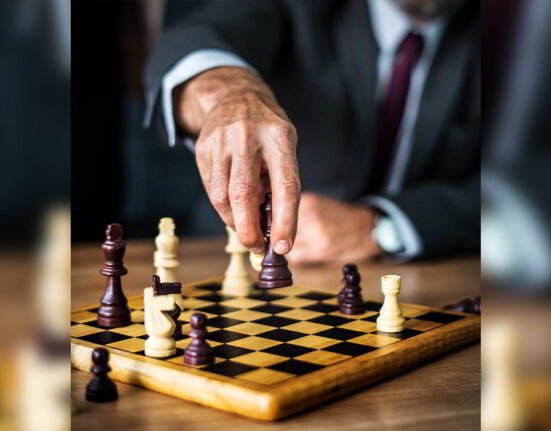Have you ever wondered why people wear what they wear? What are the mental processes underlying fashion, and why do people like to wear certain types of clothes? The behavioral processes underlying fashion are multifaceted. People use clothing as a way of expressing themselves, and their personal identity, to communicate with the world. Some say, ‘Our body is a canvas, our choice of clothes is the paintbrush, and how we style it are the fine paintbrush strokes through which we create an inventive painting’.
Self-expression
Fashion and styling is a medium through which people are able to express their sense of self, mood, personality, and identity to the world out there. When we choose our own clothes, we think of what designates our inner self the most. Each of us has our own unique style of expressing ourselves using the three tools; clothes, accessories, and styling.
When we are young, our parents make our choices on what to wear. Our schools give us a uniform to maintain a sense of discipline and a formal environment in classrooms. Adolescents spend a lot of their time choosing, and deciding what to wear as they are in their exploration phase of life. Adults who, already know their own style, tend to incline towards similar outfits and decide more quickly. Elder people also tend to have more formal clothing as compared to adolescents who want to look attractive and show off their best selves. Personal factors and lifestyle factors also play a role in shaping individuals’ clothing choices at any given age.
Mood and clothing choices
Our moods also have a large role to play in the way we dress up. Clothing choices can convey a wide range of moods and feelings. For example, when we’re happy we want to wear something that enlightens us, like bright, vibrant colors and comfortable relaxed clothing. When we are feeling confident, we might feel like wearing something bold, and stylish that makes us feel empowered. Whereas, when we are feeling sad we tend to choose subdued colors, clothes that are comfortable and minimal to the eye. Nervous and anxious people may choose clothing that comforts them, like baggy, layered outfits that cover the body.

Have you ever been in a bad mood, but you went to your cupboard and picked out one of the best outfits you saved for a long time to wear on one fine day? You wear that outfit, and automatically you feel more confident and happier. This shift in mood is how much our clothing choices can affect our perception and mood. When we feel good about how we look, it boosts our self-confidence and mood, bringing a shift to our mood and positive mental health.
How does dressing up affect our mood?
Putting on a new top/dress our pants can activate the release of dopamine in the brain, a chemical associated with feelings of pleasure and motivation. Wearing things that make you feel good helps our mental and emotional states. Our brains respond to visual cues, particularly color and pattern. Research shows that certain patterns and colors (based on color theory) activate the release of this chemical. A study that was published by the American Association for Advancement of Science found the color blue to be a stress-reducing color that induces a calming effect, decreasing feelings of anxiety and stress. Similarly, the color red produces ‘excitement and energy’, increasing the dopamine level in the brain, according to a study that was published by the Journal of Personality and Social Psychology.
Other than colors, the way an outfit is put together, and styling, plays an influential role in the visual cues. You may have a good outfit, but if you style it with certain accessories, or wear the top in a certain way, it may transform the look and impact the visual cues an outfit conveys. The same top that was untucked in the trousers might have looked very boring, as compared to the top that now elongates the lower body, making a short girl look taller. The art of styling combines the elements to convey a certain message, mood or image. Effective styling can elevate an outfit and make it uniquely personal, allowing one to express one’s individuality through fashion.
Fashion and Personality
Our fashion choices can be heavily influenced by our personality traits, interests, values, and experiences. We can also find examples of fashion styles that correlate with our personality. For example, one whose fashion style is bohemian may depict a free-spirited, expressive, and open-minded person who prefers to live unconventionally. They express themselves through a mix of colors, patterns, and eclectic pieces. They often incorporate creative and artistic elements by styling, unique jewelry pieces, and embroidery. We could call bohemian style ‘Wanderlust’ as they have a love for traveling, exploring reflecting a desire to wander and explore new cultures and experiences. Grunge fashion depicts a rebellious, non-conforming person whose aesthetic preferences feature elements like ripped jeans, flannel shirts, combat boots, and dark hues. They oppose conventional glamour and luxury associated with fashion. Similarly, different fashion styles like Punk, Gothic, and Chic, depict different aspects of people’s personalities.
A new upcoming field like Fashion Psychology examines ways in which fashion design can influence a positive body image, integrating psychological insights to foster a sustainable approach to producing clothing. Fashion psychology studies the impact of clothing choices on the way we perceive and make judgments about each other’s outfits.
Read More Articles:
Model Having Down Syndrome Ramp Walks on London’s Fashion Week
The Psychology Behind Celebrity Obsession
The Antics of the Indian Movies – A Psychological View
Think Pink Like Barbie: Barbiecore and Its Impact on Mental Health













Leave feedback about this